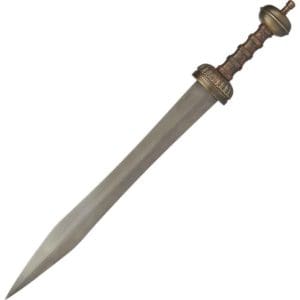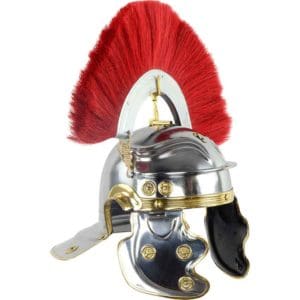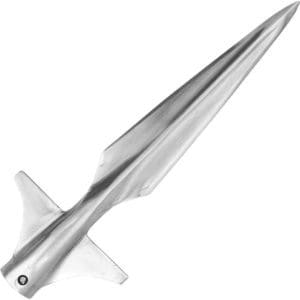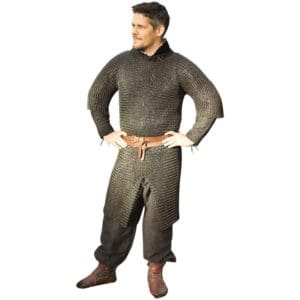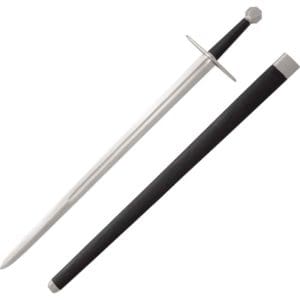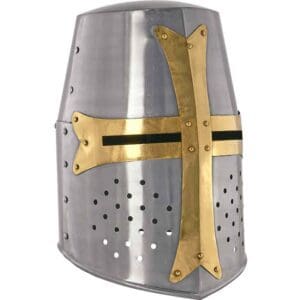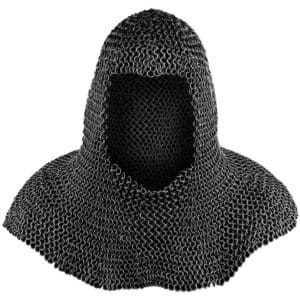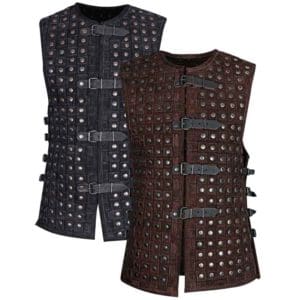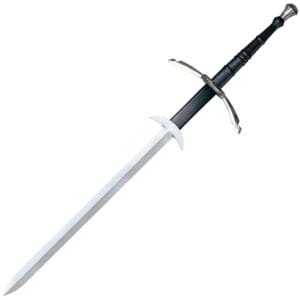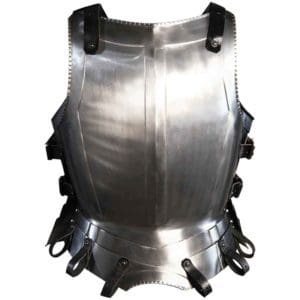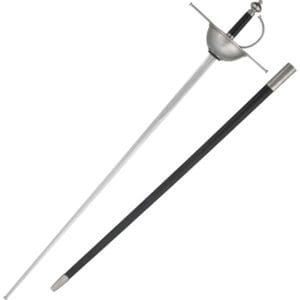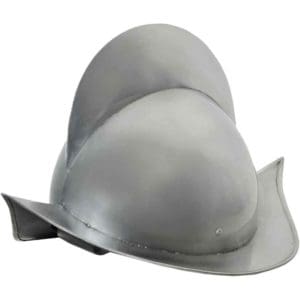History of European Arms and Armor
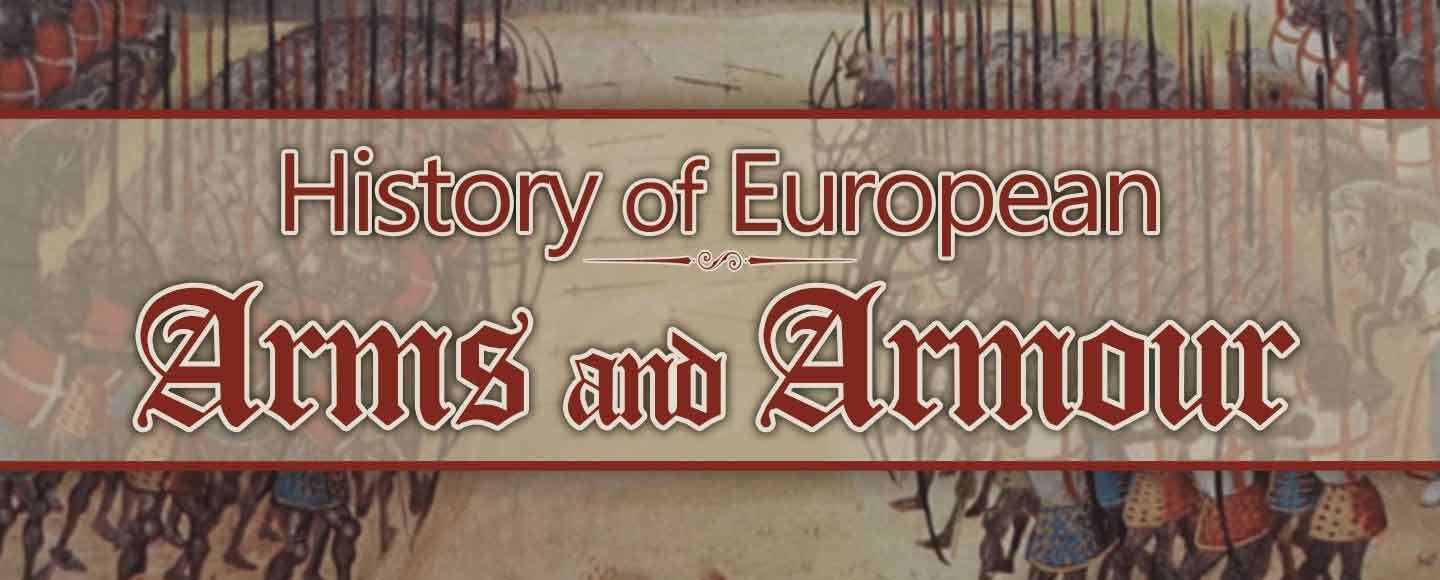
Have you ever wondered what weapons and armor would a medieval soldier have carried? The arms and armor of a European warrior would have changed over the centuries. From the Romans to the Renaissance, we will give you a quick idea of the history of European arms and armor.
Roman Arms and Armor
Let’s start with the Roman soldier. This warrior would have wielded either a sword or a spear. The most popular examples of these are the gladius and pilum respectively. Meanwhile, helmets, metal armor, and shields were the armor of the day. Two of the most popular versions were the lorica hamata and lorica segmentata. For a more in-depth look at Roman armor, make sure to check out our article on the subject.
-
Sale!
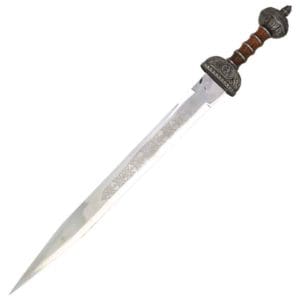 Out of stock
Out of stock
What were the arms and armor of the Early Middle Ages?
As mentioned in our general medieval timeline, the medieval world began with the Fall of Rome, circa 476 CE. With the fall of the Roman Empire, there was a loss of large-scale pieces of metal in both weapons and armor. Going into the late 5th through the 10th centuries, this was the world of the Anglo-Saxons, Vikings, and King Arthur. This early period of the Middle Ages saw spangenhelms or nasal helms, chainmail, and wooden shields. There were also the possibilities of ciur bouilli, aka boiled leather armor, and quilted armor. We discuss the historical and theoretical armor of the Vikings in a separate article.
Regardless, plate armor was no longer as common as it had been during the Romans. In additions, early medieval warriors, like the Vikings, would wield small blade weapons like axes and spears. Swords were possible but rare as we mention in our Viking weapon article.

What were the European arms and armor of the Crusades?
As the Crusades took over the 12th and 13th centuries, the armor of the Templar knight is the stereotypical image of this era of European arms and armor. Swords were a common weapon during this period along with the longbow and crossbow. These were also the beginning centuries for the fauchard and other polearms. Regarding the armor of a Crusader, chainmail was still in use. Brigandines were also in use. For helmets, they transitioned from the enclosed helm and the skull cap towards the great helm in the latter half of the Crusades. Also, towards the end of the Crusades, there was the early start of small plate armor for elbows and knees.
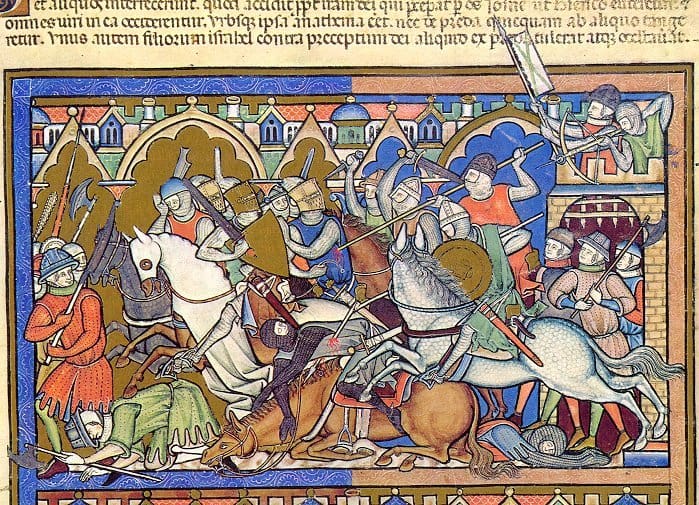
What were the arms and armor of the Late Middle Ages?
A large portion of the Late Middle Ages was taken up by the Hundred Years War amongst other wars. This was the ending of the chainmail hauberk and the beginning of the common use of plate armor. The cuirass was the most enduring part of plate armor. If you are interested in learning more about the different parts of a suit of armor, we have an article about a knights plate armor. The height of plate armor and its intricacies was the world of gothic armor.
With the rise of plate armor, a decline in the use of swords began. This was mainly due to swords being not as effective against plate armor. There was still heavy use of the longbow, especially by the English during the Battle of Agincourt. To combat plate armor, warriors began returning to polearms as their main form of weapon. This would include halberds and pikes, which could get between plates. The Landsknecht were some of the best-known warriors to wield pikes. Also, late medieval soldiers used hammers on the battlefield, which could crush the plate around the knight.
In 1421, the Battle of Kutná Hora during the Hussite Wars saw the first use of firearms as the primary offensive weapon. The use of firearms on the battlefield would increase as the medieval world came to a close.

-
Man at Arms Lance Point Spear by Cold Steel
SKU: 07-95MLPRated 4.50 out of 5$87.64$77.61 Add to Cart
Arms and Armor of the Renaissance and Beyond
The Renaissance bridges the gap between the medieval world and the Age of Exploration. With the rise of the Renaissance, thinner daggers and swords such as rapiers became popular as personal weapons. Like polearms, the skinnier blades could get between pieces of plate. Plate armor was still in use, especially the cuirass. However, wearing plate became less prevalent on the battlefield. Instead, the armor of explorers, musketeers, and pirates was the common armor in use by the 16th and 17th centuries. Thus, a cuirass and helmet were the two most common pieces of armor worn. The comb morion and burgonet are two types of these later helmets.
The arms and armor of the European soldier changed greatly from the Romans to the Renaissance. Polearms, for example, fell in and out of favor over the course of the centuries. Similarly, the use of metal plates to provide protection also rose and fell in popularity. We hope that this post gives you a quick glimpse into the history of European arms and armor.
Image Notes:
Death of King Harold – This is part of the Bayeux Tapestry. This image is in the public domain.
Morgan Bible Soldiers – This is an image from the Morgan Bible in the style of 13th century France. This image is in the public domain.
Battle of Pavia – This is a picture of a tapestry depicting the Battle of Pavia, which was fought by Landsknecht soldiers and others. This image is found under Creative Commons.


